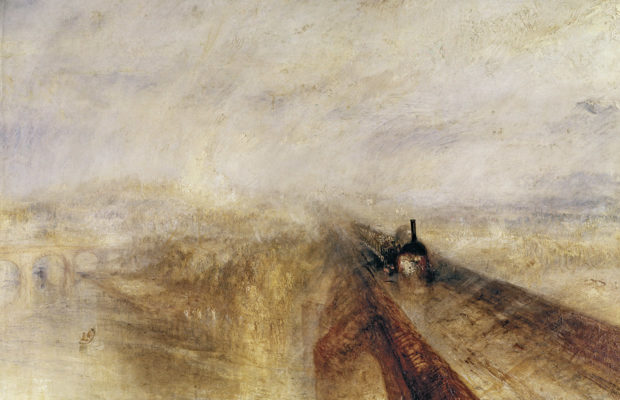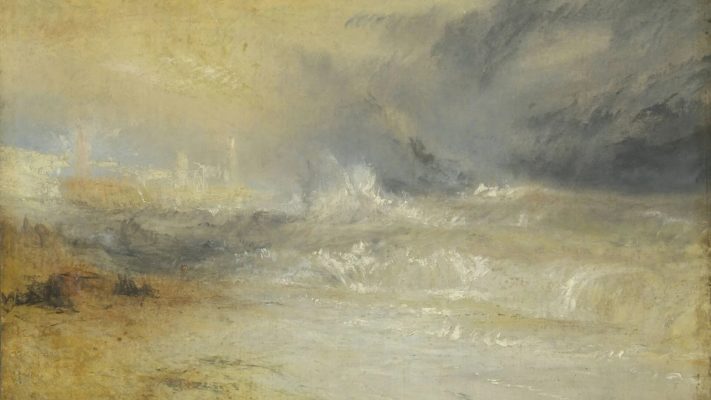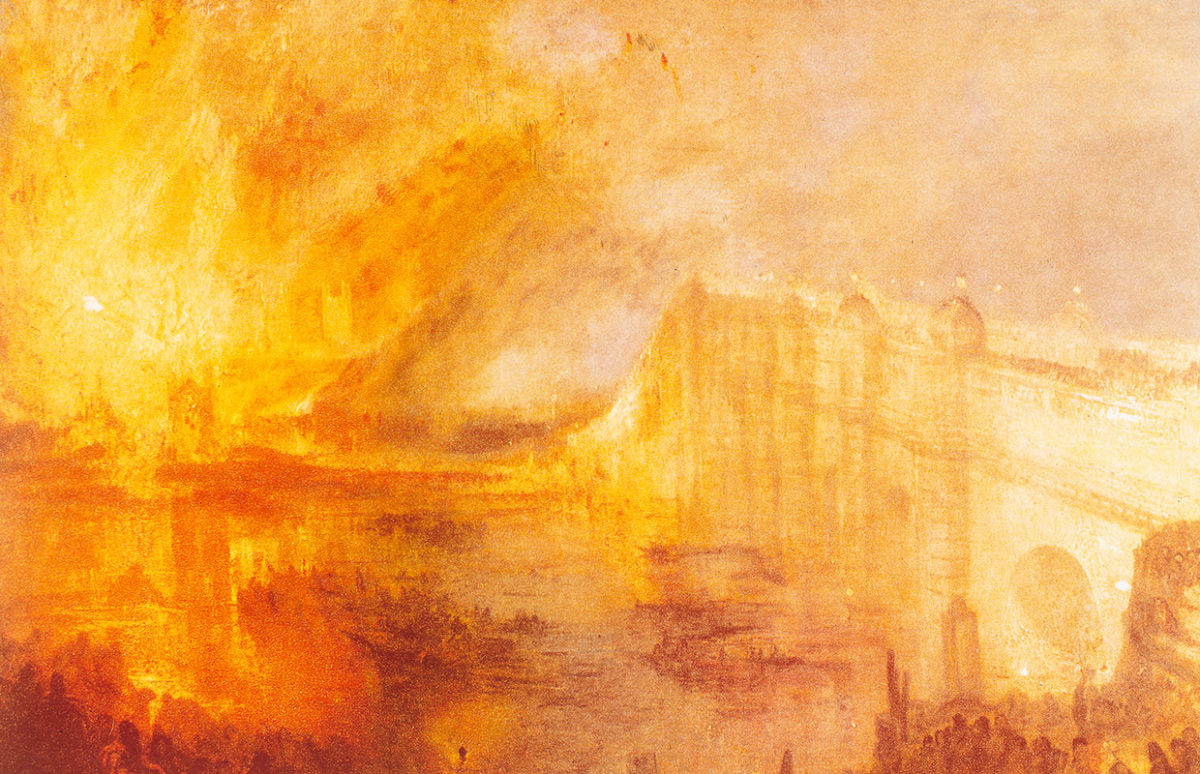One of Britain’s favourite painters, JMW Turner, was born 250 years ago, but his art continues to inspire, just as it inspired the Impressionists in the 19th century. It has a modernity that stands in contrast to his contemporary rival John Constable. It’s hard not to believe Turner would have been proud of the iconoclastic annual art prize that bears his name.
Joseph Mallory William Turner was born in London on 23 April, 1775. The son of a barber, he wasn’t an obvious candidate for one of the most lauded artists of his age. But his precocious talent saw him enter the Royal Academy schools at just 14. His first works were accepted for exhibition at the Royal Academy when he was just 21 and three years later he was elected an associate member of the RA, at the youngest permissible age.
Turner’s artistic reputation was in no doubt in his lifetime but he was also a shrewd businessman, which helped his art gain greater exposure than his contemporaries. He ran his own commercial gallery to show his work, and keep control of it. The most prestigious subjects for painting according to his teachers were historical ones but Turner could see that landscape paintings sold well. So he contrived to treat historical subjects set in attractive landscapes.
As portrayed by Timothy Spall in Mike Leigh’s film Mr Turner, the artist never married, although he had long relationships with a couple of widows. He was generally taciturn and not given to frequenting the brilliant London social circles his artistic reputation opened to him.
Turner’s early adult years were dominated by the Napoleonic Wars, which limited travel to continental Europe. But as soon as it was possible to travel again, Turner made long trips to Europe, returning with hundreds of sketches he painted up in London.
Both in his lifetime and till today, Turner was often mentioned in the same breath as another of the nation’s favourite painters, John Constable. But while the aristocratic Constable is remembered for his images of a pastoral England that had almost been consigned to history even as he painted them, Turner moved with his times.
In 2005, the BBC and the National Gallery organised a poll to find the nation’s favourite paintings displayed in the country. The top choice was Turner’s The Fighting Temeraire, which depicts a sailing warship that had been in the Battle of Trafalgar in Nelson’s fleet. In the painting, it is being towed away to be scrapped. The towing is being done by a steam-powered tugboat, symbolic of the end of the age of sail. (The nation’s second choice was Constable’s bucolic The Hay Wain.) The Fighting Temeraire is depicted on Bank of England £20 notes.

Another Turner painting combines both the contrast of the age of steam and traditional country pursuits and the painting innovations he was adopting, precursors to the Impressionist movement, is Rain, Steam and Speed — the Great Western Railway (1844). It depicts a steam train travelling at speed on a viaduct above a pastoral scene. Turner’s chief objective seems to be to show the speed in the title, painting movement with loose brushstrokes that would have been an anathema to his RA teachers.
The Impressionists, on the other hand, took inspiration from him. Félix Bracquemond's La Locomotive (1873), based on Rain, Steam and Speed, was displayed at the first Impressionist exhibition in Paris in 1874.
With an eye to his professional legacy, Turner gifted several paintings to the nation in his lifetime, and all his unsold work in his will, with the condition it be shown together.
The Turner Prize
His gift is a major part of the Tate Gallery's collection and when the Tate was looking for a name for a new annual art prize recognising originality and innovation, Turner was an obvious choice.
Since 1984, the Turner prize has become the principal annual event in the British art world, often recognising performance, installation or collective art. Previous winners include ceramicist Grayson Perry, painter Lubaina Himid, conceptual artists Gilbert & George and Damien Hirst, Jeremy Deller, R sculptors Anish Kapoor and Antony Gormley, and filmmaker Steve McQueen.
Although the actual forms of art being honoured are far from Turner’s practice, it’s hard not to imagine a rare smile on his face as each year the prize shortlist provokes a debate on what art actually is.
Anniversary
Tate Britain will be highlighting the Turners in their collection all year, and will host an exhibition contrasting Turner and his great rival Constable from November. Many other museums around the world will be honouring the anniversary with exhibitions. You can find a list on the Turner Society site. The Turner Contemporary gallery in Margate, England, is starting the year with a celebration of Turner's impressionistic seascapes.

Copyright(s) :
L'Incendie du Parlement. Exposé en 1835 Joseph Mallord William Turner 1835 Museum of art; Philadelphie Museum of art; Philadelphie
BIS / Ph. Somogy © Archives Larbor
Pluie; vapeur; vitesse. Joseph Mallord William Turner 1844
BIS / Ph. Eileen Tweedy © Archives Larbor
Tate Collection
Tate Collection
Tag(s) : "anniversary" "art" "exhibition" "film" "industrial revolution" "Margate" "Mike Leigh" "painting" "Romanticism" "Tate Britain" "Turner" "Turner Prize"





